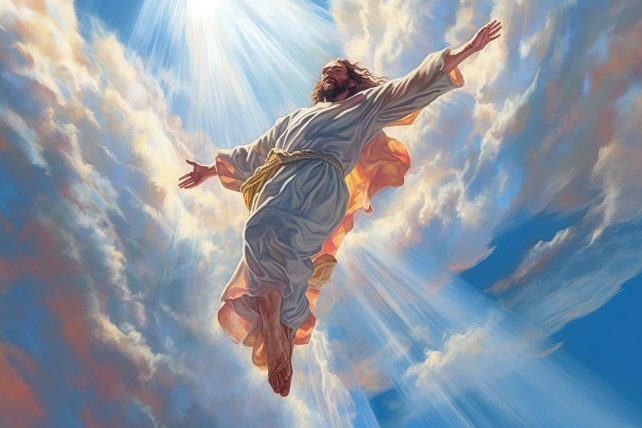God has revealed the unfolding mystery of his glory in the pages of both the Old and the New Testament. The glory of God is one of the central themes of Scripture. But what do the biblical authors have in mind when they speak of God’s glory? Simply put, the word glory carries the idea of weight or value. It captures the essence of the divine majesty by reflecting on the value of God’s being and acts.
In his work, “The End for Which God Created the World,” Jonathan Edwards helpfully explained,
The Hebrew word kabod, which is commonly translated glory, is used in such a manner as might be expected from this signification of the words from whence it comes. Sometimes it is used to signify what is internal, inherent, or in the possession of the person: and sometimes for emanation, exhibition, or communication of this internal glory: and sometimes for the knowledge, or sense of these, in those to whom the exhibition or communication is made; or an expression of this knowledge, sense, or effect.
In Romans 9:1-5, the Apostle Paul explains that God gave Old Covenant Israel certain covenantal privileges. Among Old Covenant Israel’s spiritual privileges, Paul says, “belong. . .the glory” (Rom. 9:4). What does he mean in saying that “the glory” belonged to Israel? A biblical-theological consideration will help provide the answer. Reflecting on this portion of Romans 9:4, late professor, John Murray, wrote,
“The glory” should be regarded as referring to the glory that abode upon and appeared on mount Sinai (Exod. 24:16, 17), the glory that covered and filled the tabernacle (Exod. 40:34–38), the glory that appeared upon the mercy-seat in the holy of holies (Lev. 16:2), the glory of the Lord that filled the temple (1 Kings 8:10, 11; 2 Chron. 7:1, 2; cf. Ezek. 1:28). This glory was the sign of God’s presence with Israel and certified to Israel that God dwelt among them and met with them (cf. Exod. 29:42–46).
What is God’s glory?
In redemptive history, Old Covenant theocratic Israel was the recipient of the manifestations of God’s glory. As Murray explained, it is “the sign of God’s presence.” It is not difficult to see the progressive revelation of the glory of God in the early parts of redemptive history. No sooner had God delivered Israel out of bondage in Egypt that He manifested His presence among them at Sinai. The same glory cloud that descended on the mountain was the same glory that descended on the tabernacle and temple after the sacrifices were offered. These theophanic manifestations were indicative of the special relationship that God sustained toward the covenant people. He would come and dwell with them and be among them.
This, however, is not to the totality of the progress of revelation regarding the glory. In the message of the prophet Ezekiel, we are given a glimpse into the deparatation of the glory of God from the temple and from the Old Covenant people. The first 11 chapters of Ezekiel give us a picture of the prophet in captivity and what God has promised to do to Israel on account of their unfaithfulness. Chapters 8-11 are of special importance to the message of the prophet, because they contain a step by step vision of the glory of God departing from the temple. This is, of course, the most troublesome aspect of the prophecy on account of the fact that God’s presence in the Most Holy Place, over the ark of the covenant between the cherubim on the mercy seat, is the mark of the acceptance and blessing of God.
The Lord gave Ezekiel a vision of the departure of His glory (Ez. 8:4), first from the Most Holy Place (9:3), then to the threshold of the door of the temple (10:4), then to the east gate of the temple (10:18-19), and finally departing the temple and settling on the mountain across from it (Ez. 11:22-23). This was all in anticipation of the final departing of the glory of God when Christ left the temple for the last time, and then predicted the destruction of Jerusalem in A.D. 70 as he stood and prophesied on the Mount of Olives (Matt. 23–24).
Jesus is God’s Glory
The Scriptures are clear that Christ is the glory of God (Luke 9:32; John 1:14; Hebrews 1:3; 2 Cor. 4:4, 6). Jesus is the full manifestation of God in the flesh. Wherever Jesus is, God manifests Himself among His people. So how does Ezekiel’s vision of the departure of the glory of God from the temple relate to the Person and work of Jesus, the true glory of God? O. Palmer Robertson, in his book “The Christ of the Prophets,” ties together what Ezekiel sees with what happens in the Gospel record, when he writes,
This time the prophet sees the glory of God in what he might have assumed to be its proper context. Rather than having the glory appear to him in the plains of Babylon, he is transported in his vision to the temple of the Lord in Jerusalem (Ezek. 8:3). There he is led through a progression of corruptions that defile this most holy place, and there he witnesses a progressive withdrawal of the glory from this same sacred sanctuary.

